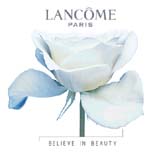|
Branding
your business
How does a business go about
branding itself? Marketers have put forward numerous theories but
few have come up with a succinct guide. Julia
Ptasznik remedies this in her guide to branding
EVERY DAY, we are bombarded by millions of messages. They�re everywhere,
from print media to highway billboards, local supermarkets, public
phone booths, our mailboxes, radios and television sets.
Add to that the explosive growth of the internet
and the new communication opportunities this medium presents, and
today�s business owner or manager has a near-impossible task at
hand: making his or her message stand out among the noise generated
by others.
Corporate giants long ago figured that the first
and most important step in accomplishing this goal is maintaining
a continuity of corporate look and message in all their communications.
Practically everyone is familiar with not only the names, but also
the visual identities of well-established companies such as Citibank,
Lancôme, and Mercedes-Benz, as well as the newer web-based
businesses like America Online and About.com.
While all of these companies operate in drastically
different industries and have entirely dissimilar agendas, they
have one crucial thing in common.
In a nutshell, this "thing" is what
marketers refer to as "branding" one�s business. Why,
you ask, should a smaller, and, perhaps, privately held, business
worry about such complicated matters?
The answer is simple. Clearly, a smaller business
doesn�t need to aspire to the level of global recognition achieved
by the aforementioned firms. However, there is no reason why it
cannot become a household name in its primary geographic area or
a narrowly defined industry segment. And that can only lead to one
thing�growth and continuity of business, despite the economic situation
at any given time.
While it is impossible to cover a topic as broad
as branding fully within the body of one article, there are some
recommendations that can be made for businesses that have not had
previous experience in this area.
Visual identity
The first of two crucial components of branding is visual identity,
the core of which is the business or product logo. The most common
mistake made by smaller businesses is either neglecting this aspect
of promotion entirely, or taking a very simplistic, do-it-yourself
approach. A good example of the latter would be to consider an acronym
of the business name, set in all caps in a "nice" typeface,
an adequate solution to the logo problem. It isn�t. Without getting
into an in-depth discussion of design, an effective logo should:
- be unique. For instance, if you are based in Texas, it is not
a very good solution to use a star as a key element of your logo�first,
because that in itself doesn�t say anything special about the
business, and second, because hundreds of other Texas-based companies
have done the same;
- instantly communicate the nature of the business, product, or
service. This can be interpreted in two ways�literal or abstract.
An example of the former is the well-known Burger King logo, a
burger. Enough said. On the other hand, Citibank�s "blinking
eye" symbol (used prior to Citicorp�s recent merger with
Travelers Group) was more abstract, having nothing directly to
do with banking, but representative of the company�s tagline �The
Citi Never Sleeps�;
- be appealing to the target audience. A good case in point here
is use of colour. If you are selling a sophisticated service such
as banking, for example, using hot pink as a corporate colour
is probably not a good idea. The consumer is never going to take
you seriously. On the other hand, if you are a florist, bright
colours are definitely the way to go;
- be able to withstand the test of time. Remember the popular
culture "punk" style of the �80s, when everything from
hair colour to fashion, art and movies was very colourful, eclectic
and somewhat light-hearted? The movement lasted for a decade,
to be gradually replaced by a more serious, streamlined and minimalist
style of the �90s, forcing us all to buy new clothes. Well, when
considering a logo design, you don�t want to go shopping for a
new one every couple of years. Thus, it is never a good idea to
stylize the design to such a point that it will become unusable
once the current fad goes out of fashion. Classic and timeless
are the words to keep in mind;
- be able to work in context of all potential communications�
media. For instance, if your logo only looks good in colour and
you advertise your product mainly in local newspapers, this will
present a production problem. The symbol will become distorted,
if not unreadable. Another good example is the use of type in
logos created for web-based businesses. Typefaces that look good
on paper, such as those that are elaborate, illustrative, and
fancy, do not translate well to the screen at low resolutions.
In those cases, one should stick to the less complex fonts.
The most important advice to be given to a business that needs
a new logo is: don�t do it yourself. You hire an attorney to represent
you in court; you hire an accountant to do your books. Hire a professional
designer, preferably one with a speciality in identity development,
to design your logo.
Finally, visual identity only begins with a logo.
A business truly needs an entire identity system, which takes into
account the fonts, colorus, and many other parameters to be adhered
to when creating varied promotional materials. Consistency is at
the very core of successful branding, and this is yet another reason
to hire a professional designer to do the job from start to finish�from
initial logo design to its applications to advertising, packaging,
corporate literature, web sites, and whatever other promotional
materials a business may need.
continued:
Positioning 

Home | Features
Your feedback is welcome
|
